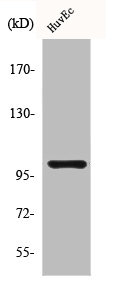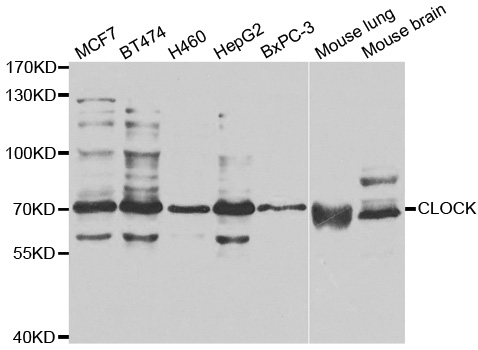CLOCK antibody [HL1099]
GTX636283
ApplicationsImmunoFluorescence, Western Blot, ImmunoCytoChemistry, ImmunoHistoChemistry, ImmunoHistoChemistry Paraffin
Product group Antibodies
TargetCLOCK
Overview
- SupplierGeneTex
- Product NameCLOCK antibody [HL1099]
- Delivery Days Customer9
- Application Supplier NoteWB: 1:500-1:3000. *Optimal dilutions/concentrations should be determined by the researcher.Not tested in other applications.
- ApplicationsImmunoFluorescence, Western Blot, ImmunoCytoChemistry, ImmunoHistoChemistry, ImmunoHistoChemistry Paraffin
- CertificationResearch Use Only
- ClonalityMonoclonal
- Clone IDHL1099
- Concentration1 mg/ml
- ConjugateUnconjugated
- Gene ID9575
- Target nameCLOCK
- Target descriptionclock circadian regulator
- Target synonymsKAT13D, bHLHe8, circadian locomoter output cycles protein kaput, circadian locomoter output cycles kaput protein, class E basic helix-loop-helix protein 8, clock homolog
- HostRabbit
- IsotypeIgG
- Protein IDO15516
- Protein NameCircadian locomoter output cycles protein kaput
- Scientific DescriptionThe protein encoded by this gene plays a central role in the regulation of circadian rhythms. The protein encodes a transcription factor of the basic helix-loop-helix (bHLH) family and contains DNA binding histone acetyltransferase activity. The encoded protein forms a heterodimer with ARNTL (BMAL1) that binds E-box enhancer elements upstream of Period (PER1, PER2, PER3) and Cryptochrome (CRY1, CRY2) genes and activates transcription of these genes. PER and CRY proteins heterodimerize and repress their own transcription by interacting in a feedback loop with CLOCK/ARNTL complexes. Polymorphisms in this gene may be associated with behavioral changes in certain populations and with obesity and metabolic syndrome. Alternative splicing results in multiple transcript variants. [provided by RefSeq, Jan 2014]
- Storage Instruction-20°C or -80°C,2°C to 8°C
- UNSPSC12352203

![ICC/IF analysis of HeLa cells using GTX83280 CLOCK antibody [8F7]. Green : CLOCK Blue: DRAQ5 fluorescent DNA dye Red: Actin filaments](https://www.genetex.com/upload/website/prouct_img/normal/GTX83280/GTX83280_20170912_ICCIF_w_23061322_661.webp)



